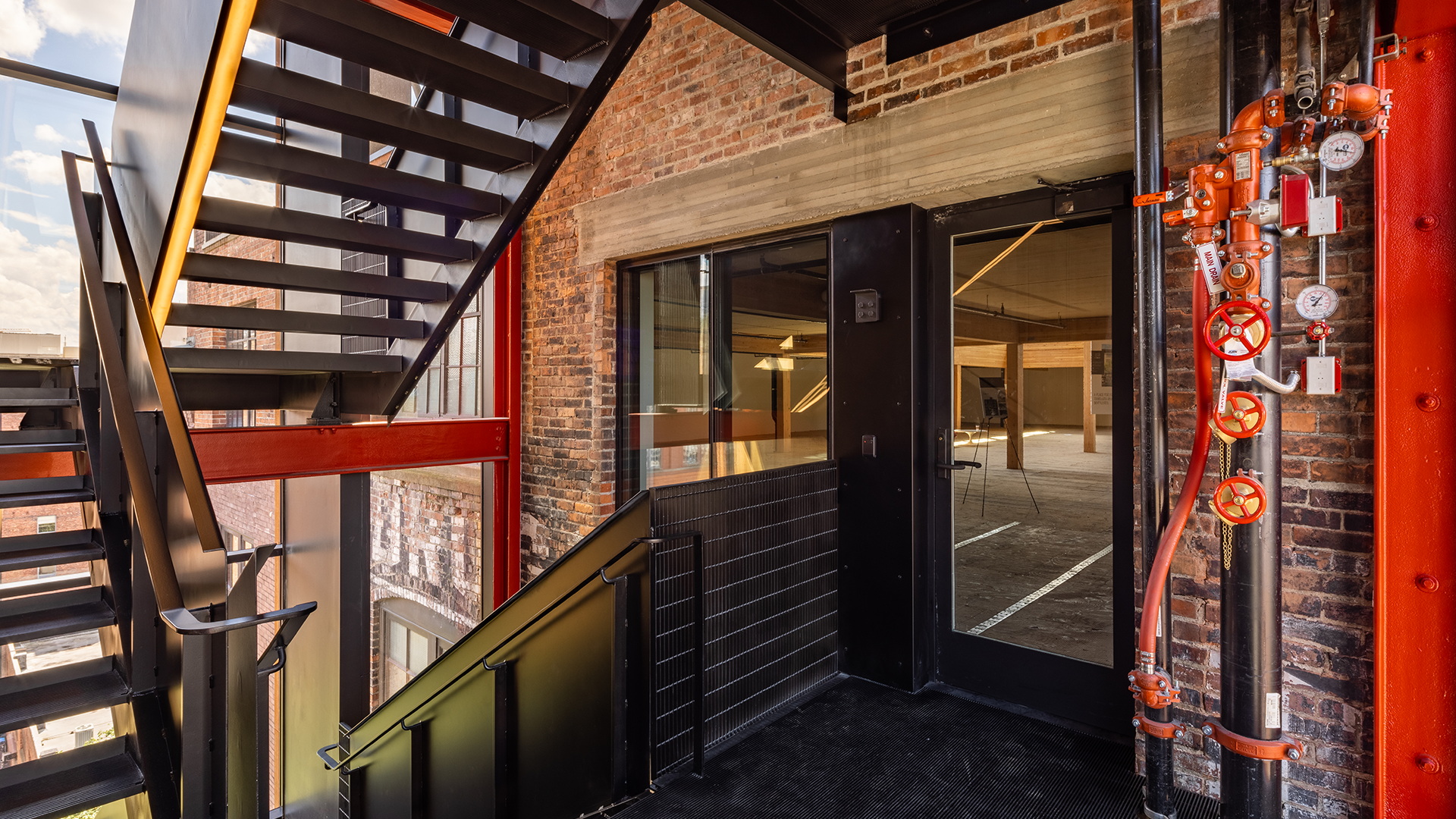Creating Clarity: Are There Disadvantages to Fire-Rated Glass?

Fire-rated glass allows designs that would have been difficult, if not impossible, decades ago. Whereas previously, fire- and life-safety code requirements were only achievable with opaque materials or small vision panels, fire-rated glass and framing can now support open designs that preserve sightlines and the visual connections between spaces. They do this all while safeguarding paths of egress and compartmentalizing large interior spaces. In fact, fire-rated glazing can be specified as full-lite doors, curtain walls, floor-to-ceiling wall panels, stairwell enclosures and even floors to support today’s design-forward building demands.
While this material can solve a variety of building challenges, what are the disadvantages of fire-rated glass? Do designers lose anything when they choose fire-rated glazing?
Fire-rated glass’ initial design led to the longstanding belief that it required aesthetic compromise and more complex security designs, among other misconceptions. While these claims were once true, the reality is that many of today’s fire-rated glazing assemblies can provide a close visual match to non-rated ones, meet complex code requirements and provide clarity comparable to regular float glass. The following will look at some supposed “disadvantages” of fire-rated glass to clarify how this material can be used throughout the built environment to improve occupant safety and comfort.
Myth #1: Fire-rated glass does not have the color and transparency of typical float glass
Since glass is a highly visible material, it is important for many design professionals that it does not detract from a building’s overall appearance simply because it includes fire-rated interlayers. This is particularly key in large expanses of fire-rated glazing, as products with poor visual clarity and color can compromise aesthetic goals.
Nearly colorless interlayers improve the surface quality and color of the current fire-resistive glass. For example, Pilkington Pyrostop® fire-rated glass is comprised of layers of Pilkington Optiwhite™ a wireless and nearly colorless low-iron float glass with clear intumescent interlayers. When used in Technical Glass Product’s (TGP) fire-rated systems, it provides nearly the same level of visual clarity and color as ordinary float glass while still meeting stringent fire- and life-safety criteria.
This results in assemblies that provide a consistent color and transparency even when compared to non-rated systems. While there can be sizable distances between non-rated and fire-rated glass, stairwells often place these assemblies in proximity to each other, emphasizing visual disparities.
Such was the case for the exterior stairwell in the 419 Occidental Ave building. The fire-rated glazing used on the north and south sides of the enclosure needed to maintain a similar look to the east and west glass curtain walls. TGP’s systems did just that—thanks to the clarity of the fire-rated glass and the narrow-profile steel frames.
Myth #2: Frames need to be bulky to support the added weight of fire-rated glass
As Greg Shiffler, one of the architects behind the 419 Occidental Ave project, notes, fire-rated glass can be heavier than other types of glass due to the materials and interlayers necessary to achieve requisite fire ratings. This added weight requires more strength from framing systems compared to the weight of typical float glass.
It might seem like stronger frames will need more material and look larger than non-rated ones, and for a long time this was the case. However, today’s fire-rated frames can be cold-formed to provide crisp profiles and a close visual match to non-rated systems while maintaining the strength necessary to support the weight of fire-rated glass. Moreover, narrow-profile steel frames can support design considerations and testing standards beyond fire ratings—especially when used in curtain wall systems.
Myth #3: Using fire-rated glass makes enhancing security more difficult
Perhaps because traditional wired glass has less impact resistance than standard annealed glass, some believe that all fire-rated glass may complicate designing for other life safety considerations. The truth is that glass ceramic and fire-rated glazing with intumescent interlayers can achieve impact ratings, such as ANSI Z97.1 and CPSC 16 CFR1201 (Cat. I and II). Further, some assemblies can also meet bullet-resistance and forced-entry standards—without compromising their fire rating. As such, these systems can help maintain paths of egress as well as enhance a building’s security. For this reason, multifunctional, fire-rated glass can help streamline specification in areas where considerations for multiple types of threats overlap.
The many advantages of fire-rated glass
When designers consider what are the disadvantages of fire-rated glass, they may think of past limitations. In reality, current fire-rated glazing options have sidelined many of these disadvantages. These products can meet several code requirements and voluntary security standards while also supporting occupant-centered designs. Because this material can fit a variety of contexts, it might be difficult to know what systems are best suited for a particular application. In response, TGP has developed the SpeciFIRE tool to help designers understand their options with fire-rated glass.


 David Vermeulen is North America Sales Director for Technical Glass Products and also the author of the Fired Up blog on Glass Magazine.
David Vermeulen is North America Sales Director for Technical Glass Products and also the author of the Fired Up blog on Glass Magazine.